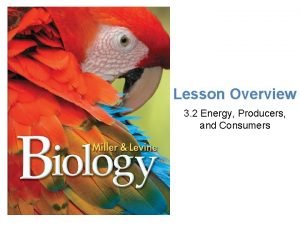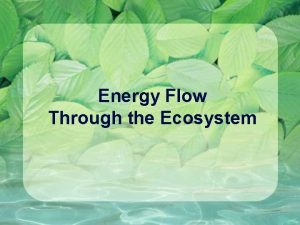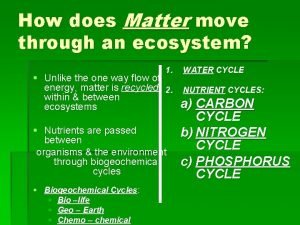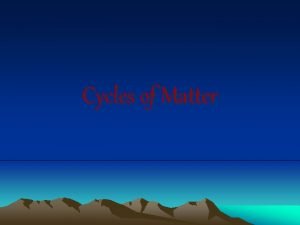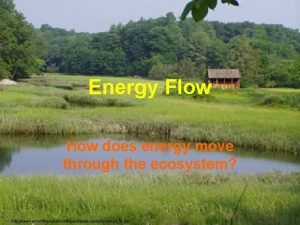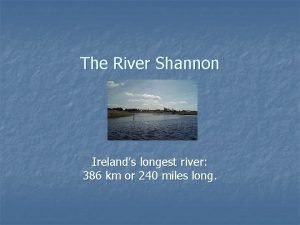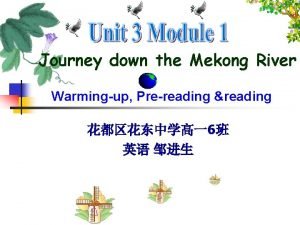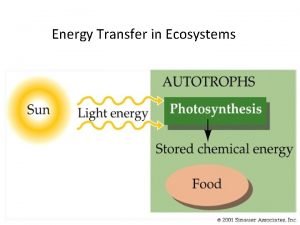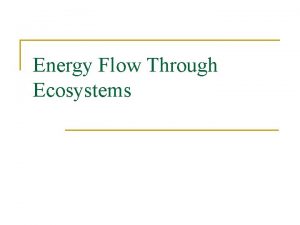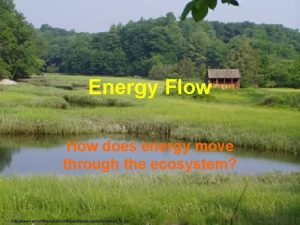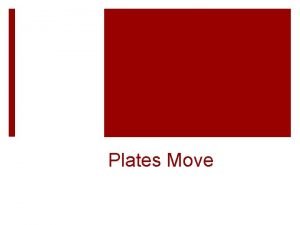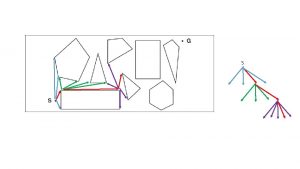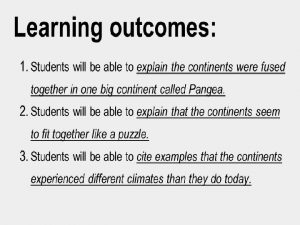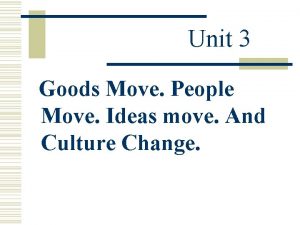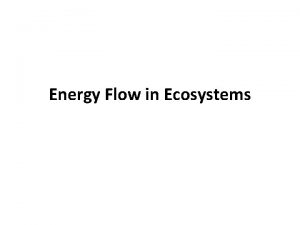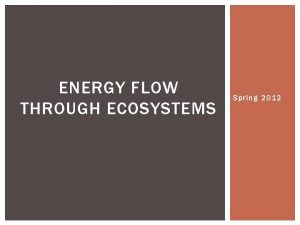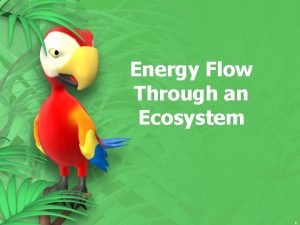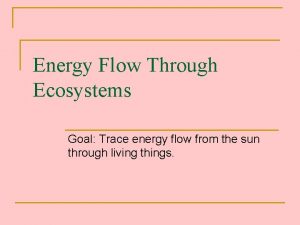Energy Flow How does energy move through the














- Slides: 14

Energy Flow How does energy move through the ecosystem? http: //www. armofthesea. info/images/landscapes/crommet_lg. jpg

Conservation: • Law of Conservation of Matter – In any ordinary physical or chemical change, matter is neither created nor destroyed, only transformed from one form to another. • Law of Conservation of Energy – In any ordinary physical or chemical change, energy is neither created nor destroyed, only transformed from one form to another.

Energy: • 2 nd Law of Thermodynamics: – When energy is changed from one form to another, some energy will be lost to the larger environment. • Nothing is ever 100% efficient. • This is due to entropy (nature’s tendency towards randomness).

How does energy flow through ecosystems? • Food Chain: A simple diagram of one string of feeding relationships in an ecosystem, showing the direction of the transfer of energy in that system. Sun Grass Rabbit Soil Wolf Bacteria

What are the parts of a food chain? Producers • Organisms that make their own food from inorganic molecules and energy. – eg. Plants, blue-green algae Energy through is –Inorganic Most accomplish energy building almost always Molecules = photosynthesis from the sun molecules that are • H 20 + Sunlight + CO 2 Sugar + Orare 2 (very not part of a living exceptions) organism

Consumers • Organisms that cannot make own food. – eg. all animals, fungi and most bacteria – Obtain energy by eating other organisms — through a process called cellular respiration • Sugar + O 2 CO 2 + H 20 + energy

Decomposers • Bacteria and fungi that break down organic material Decomposers are essential to ecosystem health because they recycle nutrients back for producers to reuse.

Food Web: • a group of food chains showing all of the feeding relationships in an ecosystem.

Food Web Sun Human Wolf Sheep Fox Bacteria Rabbit Grass Flower Mice Deer Carrots Nutrient Rich Soil

Biological Magnification • Increasing concentration of a substance in organisms in higher trophic levels in a food chain or web. Many toxins in the water Many toxins in the person

• Biological Magnificationaccumulation of increasing amounts of toxin within tissues of organisms. Video on Biological Magnification

Food Webs con’t: • Trophic level — a layer in the feeding relationship of an ecosystem, one link in the food chain/web. So, all producers are at the same trophic level and all primary consumers are at the next trophic level. • Biomass — total amount of organic material present in a trophic level. Organic = is currently living or lived in the past

Energy Pyramids http: //www. vtaide. com/png/foodchains. htm http: //www. earthforce. org/files/1284_image 2_Energy_Pyramid_for_ Galvbay. jpg • Another way to look at trophic levels. • a diagram showing the relative amounts of energy/biomass in the different trophic levels. • Lowest trophic levels are at the bottom: Producers have the greatest biomass.

Example of an Energy Pyramid 0. 1% 1 MAN 10% 100 % of the sun’s energy FOX 1% 10% RABBIT Rabbit 90% Energy Lost during conversion to heat, waste…. 90% 10% Grass 90% 10 FOXES 100 RABBITS 1000 Bunches of GRASS - The decreasing size of the pyramid shows that each level of the pyramid has a smaller and smaller number of those organisms.
 How does energy move through the biosphere
How does energy move through the biosphere How does energy move through most ecosystems on earth
How does energy move through most ecosystems on earth How does energy flow in a food web
How does energy flow in a food web How does energy flow through an ecosystem
How does energy flow through an ecosystem Layers of a leaf diagram
Layers of a leaf diagram How does matter move through an ecosystem
How does matter move through an ecosystem How does matter move
How does matter move Lateral thinking riddle
Lateral thinking riddle How does energy move
How does energy move What is the longest river in ireland
What is the longest river in ireland Journey down the mekong
Journey down the mekong Energy transfer in ecosystems
Energy transfer in ecosystems Energy roles in an ecosystem
Energy roles in an ecosystem Ecological succession
Ecological succession Flow of energy vs flow of matter
Flow of energy vs flow of matter
